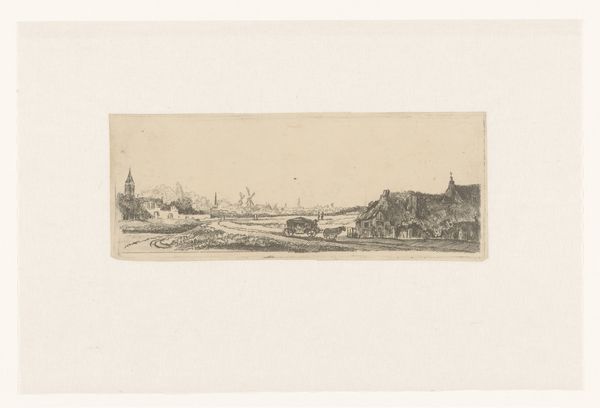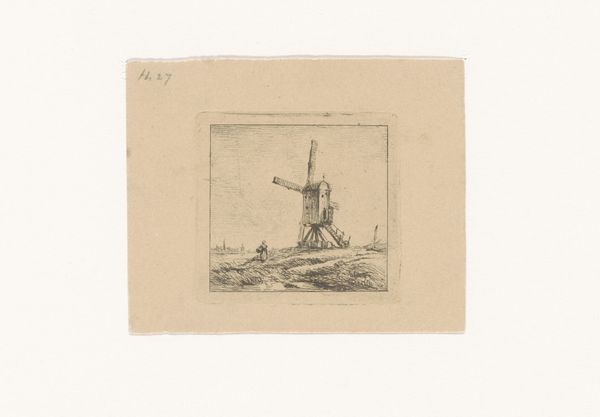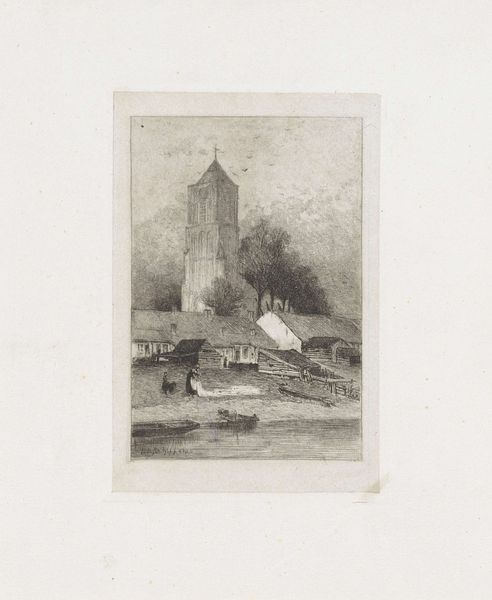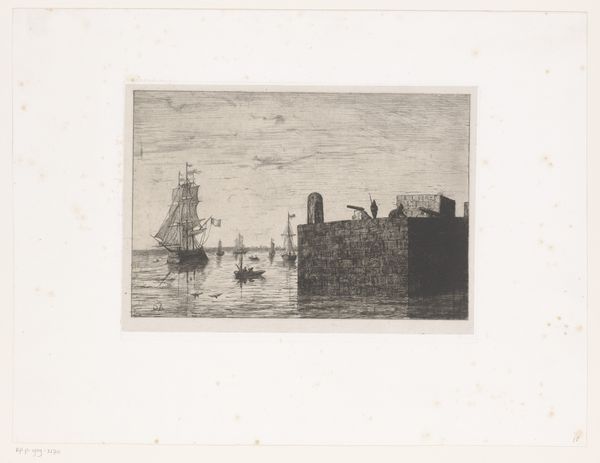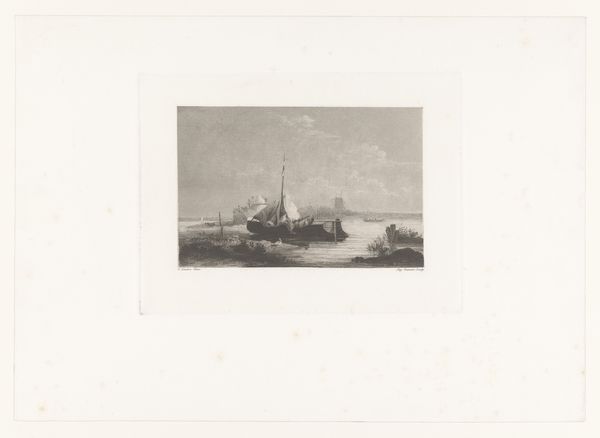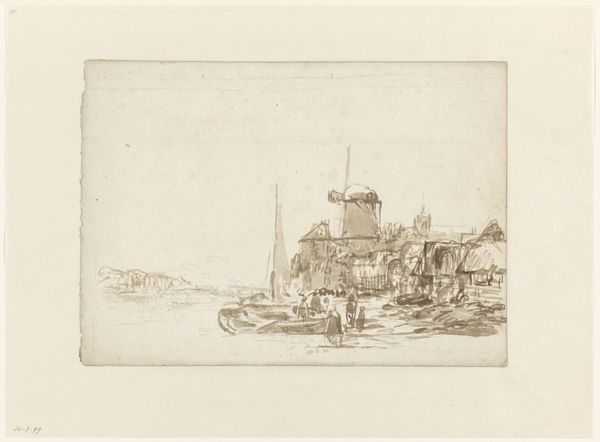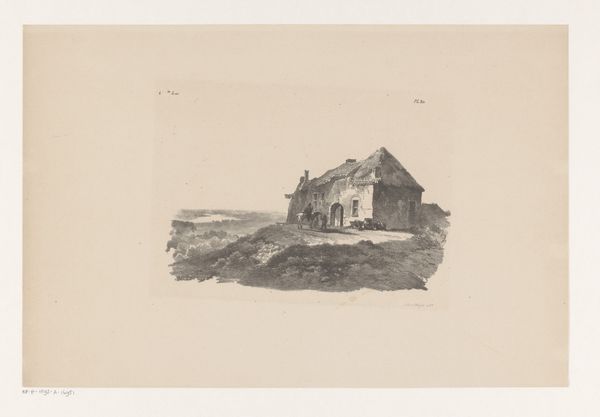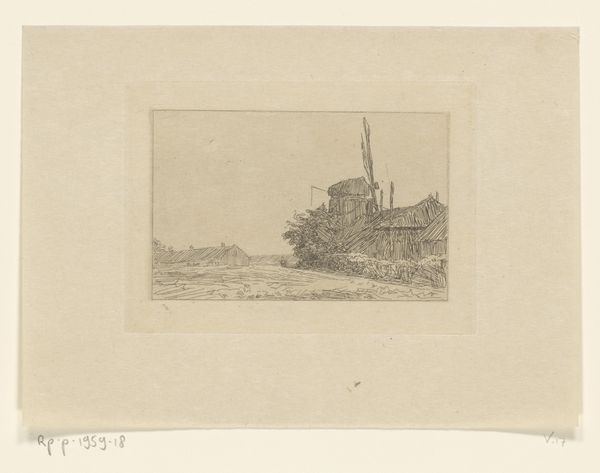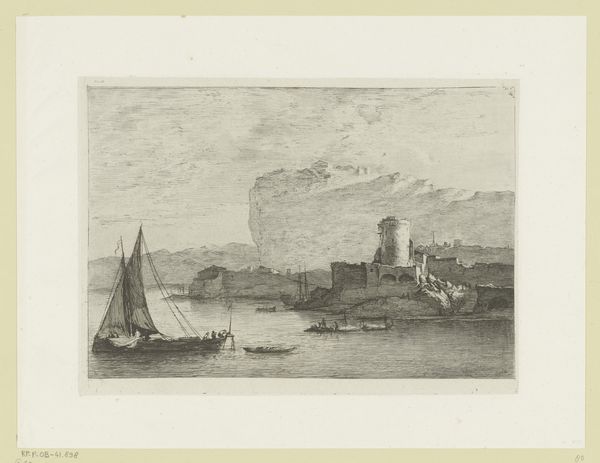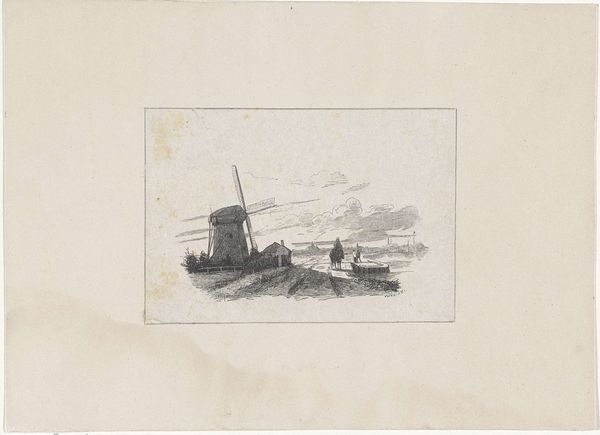
drawing, print, etching
#
drawing
#
aged paper
#
light pencil work
#
quirky sketch
# print
#
etching
#
sketch book
#
landscape
#
personal sketchbook
#
idea generation sketch
#
sketchwork
#
sketchbook drawing
#
storyboard and sketchbook work
#
sketchbook art
Dimensions: width 97 mm, height 66 mm
Copyright: Rijks Museum: Open Domain
Editor: This etching, "Weg door het dorpje Scheveningen," dating from between 1837 and 1880, by Jacobus van Gorkom Jr., is quite intriguing. The light pencil work gives it an unfinished, almost dreamlike quality. What catches your eye when you look at this piece? Curator: Primarily, the interplay of line and texture. Note how van Gorkom uses delicate hatching to render the thatched roofs and the overcast sky. The composition, though seemingly simple, relies on a strong horizontal axis established by the road, punctuated by the verticals of the buildings. It is interesting how the artist is concerned with contrasts to articulate spatial depth. Editor: It seems so unassuming, like a quick sketch. Curator: Precisely! And that is its strength. The artist reduces the scene to its bare essentials: form and tone. Do you see how the tonal gradations create depth, leading the eye into the distance? There are strong visual connections which offer both balance and dynamism. Editor: Now that you point it out, I notice how the strokes become fainter the further away the buildings are. Does the work succeed, in your opinion? Curator: Undoubtedly. The very lack of detail invites contemplation. Consider the negative space, the untouched paper; it becomes as important as the drawn elements. The artist seems less interested in portraying Scheveningen literally than in capturing a feeling, an atmosphere. Editor: It’s amazing how much can be conveyed with so little. I will have to re-evaluate the importance of minimalism! Curator: Indeed. By focusing on the fundamental visual elements, van Gorkom achieves a remarkable expressiveness.
Comments
No comments
Be the first to comment and join the conversation on the ultimate creative platform.
